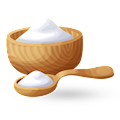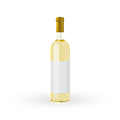Zabaione
(Zabaglione, Zabajone, Sanbajon)
One of Italy’s most spectacular desserts, the luscious zabaione is a velvety custard cream of relatively obscure and mysterious origins. According to one legend, it was invented in Turin around the 16th century and was originally named crema di San Baylón, after its supposed inventor Franciscan monk Pascual Baylón Yubero, the patron saint of pastry chefs.
Interestingly enough, in modern-day Piedmont zabaione is still called sanbajon, though the oldest recipe for this creamy indulgence was found in L’Arte di Ben Cucinare, a 1662 book by Bartolomeo Stefani, head chef of the Republic of Venice and the Duchy of Mantua.
Regardless of its true origins, zabaione remains an all-Italian classic prepared in the exact same way across the country by whisking egg yolks with sugar over a bain-marie until they thicken into a smooth, foamy cream. Zabaione is flavored with fortified wines that are typically high on the sweet scale, such as Marsala, Vin Santo, or the bubbly Moscato d’Asti and Brachetto d’Acqui.
The cream can be enjoyed warm with ladyfingers, amaretti, or melicotti biscuits, but it can also be chilled and served over fresh fruits such as strawberries, raspberries, or blueberries.






